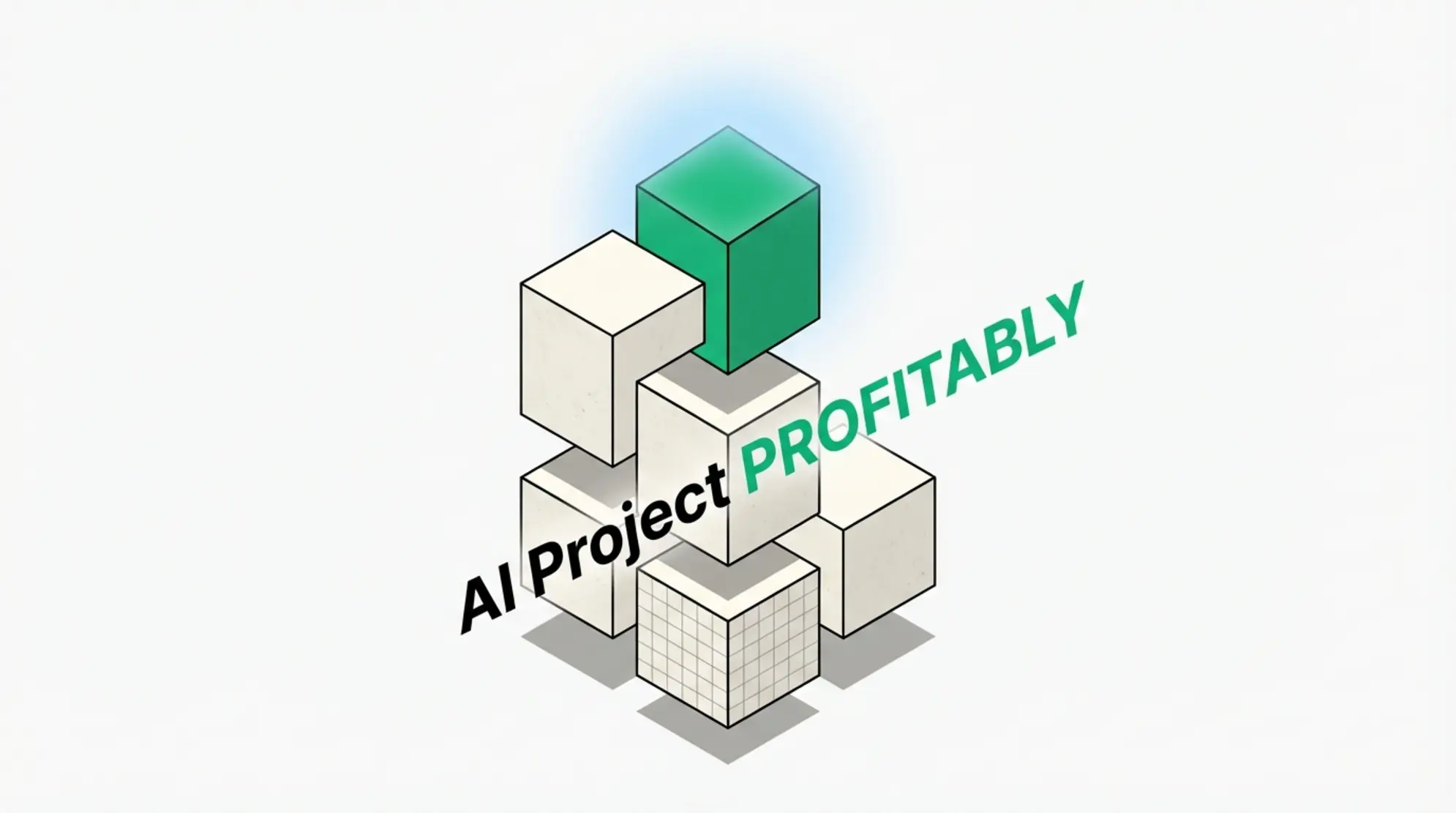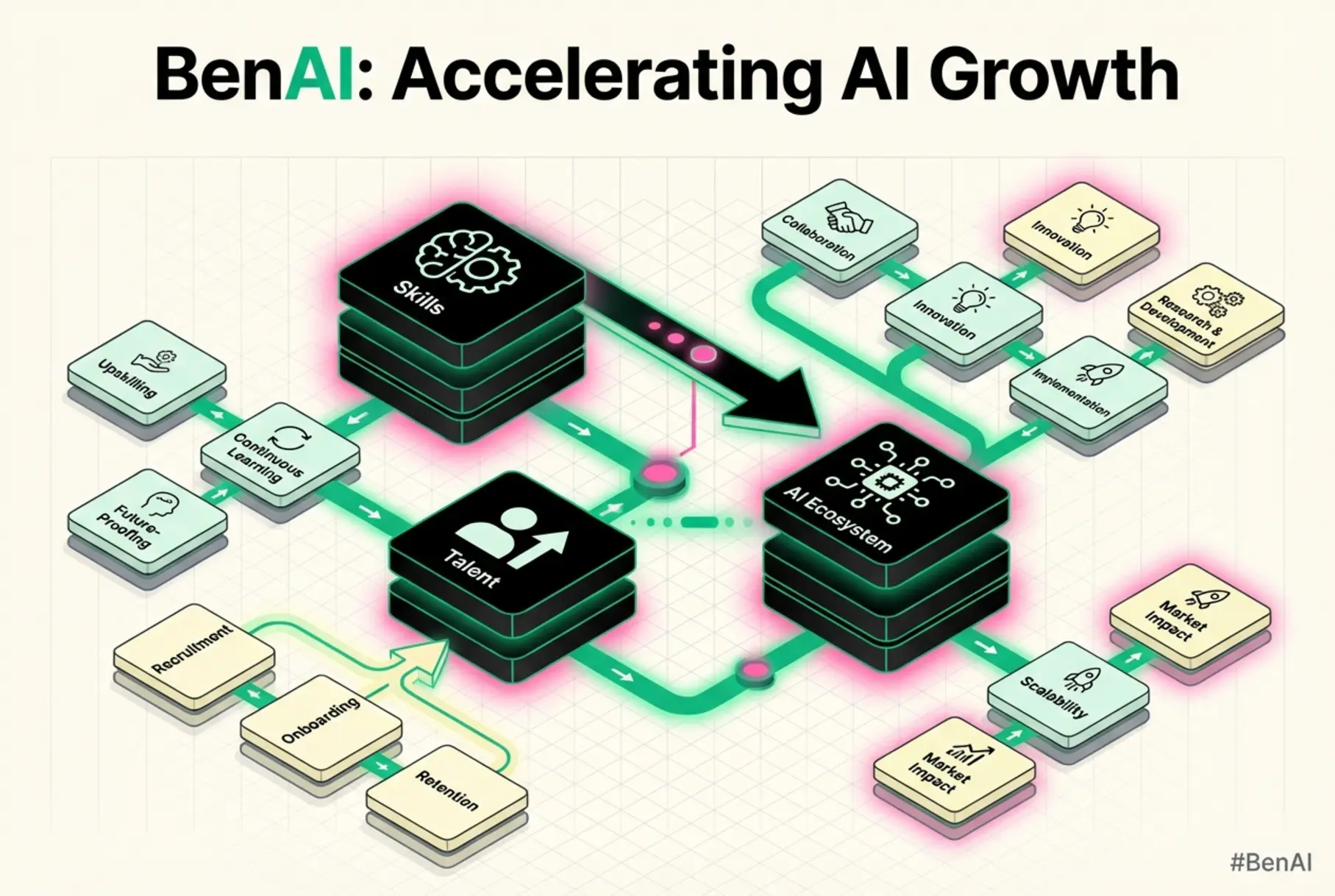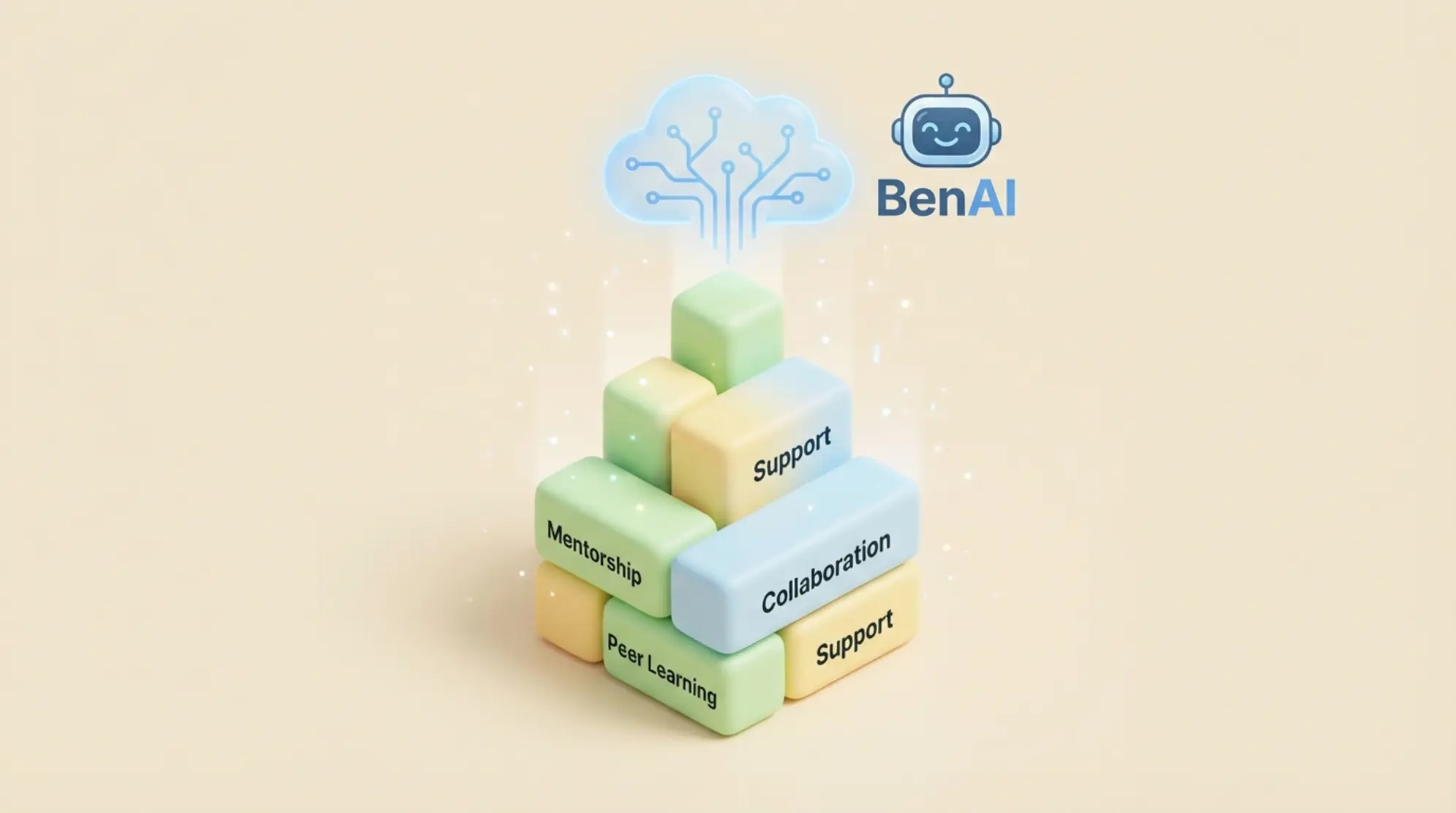Image optimization using AI tools transforms digital asset management, offering sophisticated solutions for automating image compression, alt text generation, and intelligent file naming. This guide serves as a comprehensive resource for website managers, professional photographers, and developers evaluating AI-powered platforms that enhance page load speed and improve image SEO. Modern AI tools leverage deep learning to significantly outperform traditional manual or rule-based methods, delivering substantial business and user experience benefits.
The market for AI-powered image optimization platforms is experiencing rapid expansion, projected to be a key growth vertical within the US AI market, which is valued at nearly $74 billion by 2025 according to Stanford's AI Index 2025. These advanced systems provide scalable and cost-effective automation, especially pertinent given that the cost of AI inference has fallen over 280 times from late 2022 to 2024. Understanding the technical depth, real-world ROI, and practical applications of these tools is crucial for making informed decisions.

Comprehensive Guide to AI-Powered Image Optimization
AI-powered image optimization encompasses a suite of advanced techniques that leverage machine learning and deep learning algorithms to automatically enhance image assets for web use. These techniques target critical aspects such as file size reduction, descriptive metadata generation, and consistent naming conventions, all without compromising visual quality. The approach moves beyond basic compression methods by integrating semantic understanding and predictive analytics to deliver superior results in image quality and web performance.
AI-Driven Image Compression: How it Reduces File Size and Improves Performance
AI-driven image compression significantly reduces image file sizes while maintaining perceived visual quality, directly impacting website load speeds and user experience. Unlike traditional compression that relies on predefined algorithms, AI models learn from vast datasets to identify and remove redundant information more intelligently. This results in superior compression ratios for formats like JPEG, PNG, WebP, and AVIF.
For example, AI compression tools achieve 20-30% better lossless compression ratios when compared to classical methods, as highlighted by StatusNeo. This improvement directly translates into faster page loading times, a critical factor for SEO and user retention. Reduced file sizes minimize bandwidth consumption, benefiting both users on slower connections and website hosting costs. The underlying mechanism involves advanced signal processing and neural networks that predict optimal encoding parameters based on image content.
How does AI optimize image compression beyond traditional methods?
AI optimizes image compression by employing sophisticated algorithms such as convolutional neural networks (CNNs) that analyze image content semantically. These networks identify visually important regions, allocating more data to preserve detail in those areas while aggressively compressing less significant parts. Traditional methods, in contrast, apply uniform compression across the entire image or use simpler heuristics, often leading to a compromise between file size and quality. For instance, AI can distinguish between a sharp facial feature and a blurred background, applying varied compression levels to each.
AI-driven compression often utilizes entropy modeling combined with neural networks to learn optimal coding schemes. This allows for adaptive compression that is highly sensitive to the unique characteristics of each image. By predicting the most efficient way to represent image data, AI achieves a higher fidelity-to-size ratio, delivering smaller files with less noticeable visual degradation. This process ensures that critical visual information remains intact even with significant file size reductions.
Automated Alt Text Generation: Enhancing Accessibility and Search Engine Optimization
Automated alt text generation utilizes AI's semantic understanding to create descriptive alternative text for images, which is vital for both accessibility and search engine optimization (SEO). Alt text, or alternative text, provides a textual description of an image for visually impaired users relying on screen readers and helps search engines understand image content. AI tools use computer vision and natural language processing (NLP) to analyze image elements and generate contextually relevant descriptions.
The Contentful blog explains that AI alt-text tools automate descriptions with semantic understanding, leading to significant SEO and accessibility improvements. This automation is particularly beneficial for websites with large image libraries, as manual alt text creation can be time-consuming and prone to inconsistency. AI models identify objects, actions, and contexts within an image to produce detailed and accurate descriptions, ensuring that images contribute positively to content comprehension and search visibility.
What are the benefits of AI-generated alt text for SEO?
AI-generated alt text offers significant benefits for SEO by providing search engines with richer, more consistent contextual information about images. Search engines like Google utilize alt text to index images and determine their relevance to specific search queries, impacting image search rankings. Accurate alt text improves the overall topical authority of a web page by reinforcing the subject matter through visual content.
Furthermore, AI-generated alt text ensures a higher degree of consistency across a website's image assets, eliminating discrepancies that often arise with manual entry. This uniformity helps search engine algorithms more effectively categorize and rank content. By providing detailed descriptions that include relevant keywords, AI enhances the discoverability of images, driving increased organic traffic through image search results. This directly supports the broader SEO strategy of content optimization, as noted by Search Engine Land.
Intelligent File Naming and Metadata: Streamlining Image Management and Discoverability
Intelligent file naming and metadata automation leverage AI to organize and optimize image assets for better discoverability and management within digital ecosystems. AI tools analyze image content and context to suggest or automatically apply descriptive file names and embed relevant metadata, moving beyond generic filenames such as "IMG_001.jpg." This structured approach is critical for large image libraries and improves both internal organization and external search engine indexing.
Properly named files and rich metadata, including descriptive keywords and copyright information, enhance an image's ability to rank in image search results and improve content management system (CMS) navigability. For example, an image of a red sports car might be automatically named "red-sports-car-driving-city-street.jpg" and tagged with "sports car," "automobile," and "cityscape." This level of detail, facilitated by AI, ensures that every image asset contributes effectively to the overall SEO and user experience.
Technical Deep Dive into AI Algorithms
The sophistication of AI image optimization tools stems from advanced machine learning algorithms, primarily deep learning architectures. These algorithms allow tools to "understand" image content, perform complex transformations, and make intelligent decisions about compression, upscaling, and metadata generation. Understanding these technical underpinnings provides insight into why AI-powered solutions often surpass traditional methods.
Convolutional Neural Networks (CNNs) in Image Processing
Convolutional Neural Networks (CNNs) are the foundational AI architecture for image processing, enabling tasks like object recognition, semantic segmentation, and image enhancement. CNNs consist of multiple layers that learn to detect features at various levels of abstraction, from simple edges and textures in early layers to complex objects and patterns in deeper layers. This hierarchical learning allows AI tools to interpret image content with high accuracy.
In image optimization, CNNs are instrumental in:
- Feature Extraction: Identifying key visual elements that must be preserved during compression or upscaling.
- Noise Reduction: Differentiating between actual image detail and noise, then intelligently removing the latter without blurring important features.
- Quality Assessment: Learning to predict human perception of image quality, guiding compression algorithms to minimize visually noticeable degradation.
According to Netguru, AI model optimization techniques, often centered on CNNs, are crucial for making these processes efficient and effective. The ability of CNNs to process pixels in context, rather than in isolation, gives them a powerful advantage in achieving high-quality image transformations.
Entropy Modeling and Lossless Compression
Entropy modeling, when combined with AI, plays a crucial role in achieving superior lossless compression ratios by predicting and encoding information more efficiently. Lossless compression aims to reduce file size without any loss of original image data, making the image perfectly reconstructible. AI models improve upon traditional entropy coders by learning complex statistical dependencies within image data.
Traditional lossless compression algorithms, such as Huffman coding or Lempel-Ziv (LZ) variations, rely on simpler statistical models of data redundancy. AI, particularly through techniques like deep learning-based generative models, develops more sophisticated entropy models that can capture long-range dependencies and contextual information within an image. This allows AI to identify and remove more redundancies, leading to smaller file sizes for formats like PNG, where every pixel detail is preserved. StatusNeo's research confirms that AI can create lossless compression algorithms with significantly improved performance, achieving 20-30% better ratios compared to classical methods.
Generative Upscaling and Detail Restoration
Generative upscaling represents a cutting-edge application of AI in image optimization, allowing tools to enlarge images while generating new, realistic details rather than simply interpolating existing pixels. This capability is particularly valuable for improving the resolution of lower-quality images or preparing images for print from web-optimized versions. Generative Adversarial Networks (GANs) are frequently employed in this process.
GANs consist of two neural networks: a generator that creates new image data and a discriminator that evaluates its realism. Through a competitive process, the generator learns to produce high-resolution images that are indistinguishable from real high-resolution images, while the discriminator improves at detecting fakes. Deep-Image.ai, for example, highlights its generative upscaling capabilities, including generative detail restoration, which can "re-create" missing textures and fine elements. This allows for significant resolution increases without the characteristic blurriness or pixelation associated with traditional upscaling methods.
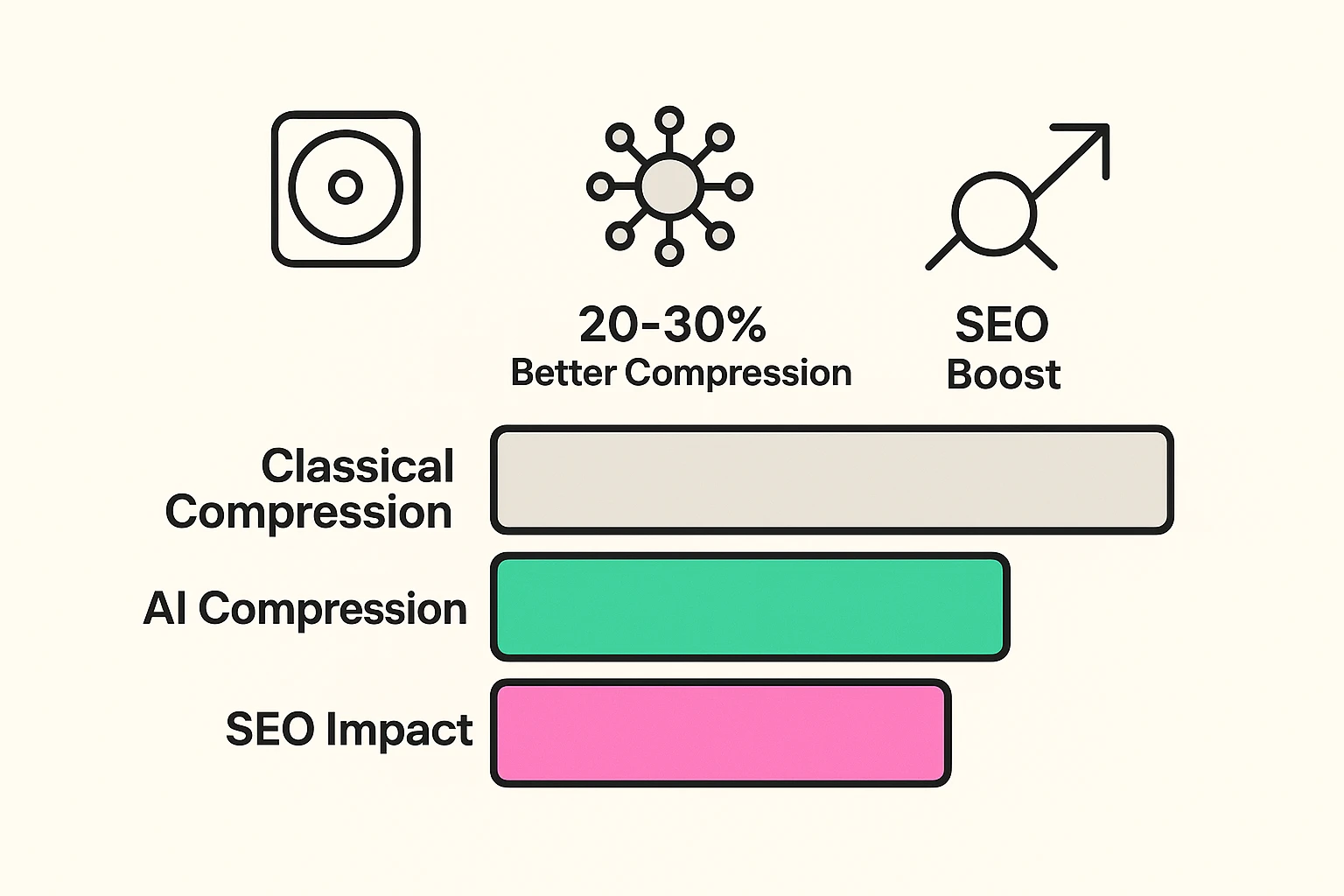
Empirical Data, SEO Impact, and Performance Metrics
The real-world benefits of AI image optimization are quantifiable through empirical data on page load speeds, SEO improvements, and overall website performance. These tools directly address common pain points like slow loading times and suboptimal image search rankings, which directly impact user engagement and conversion rates. Understanding these metrics is essential for evaluating the ROI of AI adoption.
For instance, the US AI market is expected to reach nearly $74 billion in 2025, with image optimization being a significant contributor, according to the Stanford AI Index 2025. This growth reflects the tangible advantages AI provides. Furthermore, AI compression tools regularly achieve 20-30% better lossless compression ratios compared to classical methods, as outlined by StatusNeo. This translates into faster loading pages, which Google confirms is a critical ranking factor and user experience metric.
Quantifying the Impact on Website Load Speed
AI image optimization demonstrably improves website load speed by drastically reducing the file size of image assets. Images often constitute the largest portion of a web page's total bytes, and efficient compression directly correlates with faster rendering. When AI tools achieve 20-30% better compression, this can shave off critical milliseconds from load times, especially on mobile devices or slower network connections.
A faster website leads to several positive outcomes, including lower bounce rates, higher conversion rates, and improved user satisfaction. Websites that load within 2-3 seconds experience significantly better engagement than those taking longer. AI's ability to optimize images without visible quality loss ensures that these speed gains do not come at the expense of visual appeal, thereby maintaining a positive user experience.
Measuring AI's Contribution to Search Engine Rankings
AI's contribution to search engine rankings is multifaceted, primarily by enhancing factors that Google and other search engines prioritize: page speed, accessibility, and content relevance. Automated alt text and intelligent file naming provide search engines with robust, consistent metadata, improving how images are indexed and ranked. The Contentful blog highlights that AI alt-text tools automate descriptions with semantic understanding, which contributes directly to SEO improvements.
Moreover, faster page load speeds—a direct result of AI-driven compression—are a confirmed ranking signal. Google prioritizes user experience, and a fast-loading site with well-optimized images positively influences its algorithms. By ensuring images are both high-quality and technically optimized, AI tools help web pages achieve higher visibility in both web and image search results, capturing a broader audience.
Hands-On Walkthroughs and Practical Examples
Integrating AI image optimization into existing content management workflows involves several practical steps, from tool selection to implementation. While a live demonstration is not possible here, outlining the typical workflow illustrates how these tools simplify and automate complex tasks. Daily generation of 34 million AI-created images underscores the need for streamlined optimization processes, as reported by DigitalSilk.
A typical workflow might involve:
- Image Upload: Users upload images individually or in batches to the AI platform.
- AI Analysis: The AI analyzes each image for content, dominant colors, and important visual features.
- Automatic Optimization:
- Compression: The AI applies optimal compression settings for the chosen output format (e.g., WebP, AVIF) to reduce file size.
- Alt Text Generation: Based on image analysis, the AI generates a descriptive alt text.
- File Naming: The AI suggests or automatically applies SEO-friendly file names based on identified content.
- Review and Export: Users can review the optimized images and their generated metadata, making minor adjustments before exporting or integrating them into their CMS.
Many tools also offer API integration, allowing for real-time optimization as images are uploaded to a website or application, eliminating manual steps entirely. This level of automation significantly boosts productivity for web professionals.
Evaluating Top AI Image Optimization Tools
Selecting the right AI image optimization tool requires evaluating features, pricing, and workflow integration capabilities to align with specific project requirements. The market offers diverse solutions, from comprehensive platforms to specialized plugins, each with unique strengths. This section delves into some leading options, providing insights for decision-makers.
HubSpot Blog's Perspective on AI Image Optimization
The HubSpot Blog, in its article on AI image optimization, provides an in-depth guide covering the benefits, use cases, and detailed reviews of multiple top tools. It emphasizes the importance of AI for productivity gains and ease of use for editors. The blog often includes direct user quotes and pricing information, offering a practical overview for marketers and website managers.
HubSpot's analysis highlights tools like Kraken.io, Cloudinary, and Topaz Labs, focusing on their ability to automate image compression, resizing, and general enhancements. While strong on business benefits and usability, the blog generally lacks deep technical explanations of the underlying AI algorithms, catering more to a marketing and general business audience. Its content flow starts with conceptual introductions, moves to detailed tool comparisons, and concludes with buying advice.
Deep-Image.ai: Generative Upscaling and Quality Enhancement
Deep-Image.ai focuses on advanced AI enhancements for image quality, notably through generative upscaling and noise removal. This vendor site details features such as color correction and background manipulation, emphasizing its unique capability for generative detail restoration. Deep-Image.ai leverages AI to not just enlarge images, but to "create" missing pixels and textures, resulting in a higher quality output compared to traditional interpolation methods.
The platform provides user testimonials and case studies that add credibility to its claims of superior image quality. Its primary audience includes photographers, designers, and e-commerce businesses that require high-resolution images for various applications. While its promotional tone limits independent comparisons, Deep-Image.ai's strength lies in its specialized AI capabilities for enhancing visual fidelity, offering a strong value proposition for quality-focused users.
Optidash: Enterprise-Grade API and Developer Focus
Optidash.ai positions itself as an enterprise-grade AI image optimization platform with a strong developer focus, featuring robust API integrations and team functionalities. It targets larger organizations and development teams that require scalable, programmable solutions for image processing. Optidash emphasizes features like role-based access, security integration, and comprehensive reporting, which are crucial for enterprise environments.
The platform provides API demos in multiple code languages and detailed technical documentation, making it highly appealing to developers. Its unique angles include multi-language, cross-stack API developer tooling, ensuring seamless integration into existing tech stacks. While less approachable for non-technical users due to its deep technical dive, Optidash excels in providing a highly customizable and scalable solution for automating image optimization within complex application ecosystems. To learn more about how ai powered website optimization agents can integrate with such tools, visit our guide on automated on-page SEO with AI.
ShortPixel: Plugin-Based Compression and Next-Gen Formats
ShortPixel offers a plugin-based solution primarily focused on simple image compression and format conversion, with strong integration for CMS platforms like WordPress. Its core strength lies in its ease of use and compatibility with common plugins, making it a popular choice for bloggers and small to medium-sized websites. ShortPixel emphasizes conversion to next-gen formats such as WebP and AVIF, which deliver superior compression and browser support.
While it provides robust compression and format optimization, ShortPixel places less emphasis on AI alt text or intelligent file naming automation compared to more comprehensive platforms. Its unique angles include progressive JPEG optimization and advanced next-gen format support, which are critical for maximizing page speed. Strong user reviews and an active support community underpin its reputation. The platform’s flow highlights its feature and value proposition upfront, followed by customer testimonials and pricing.
Comparison Table: A Conceptual Framework
A comprehensive comparison table is invaluable for decision-makers to weigh the strengths and weaknesses of various AI image optimization tools. Such a table would include:
- Core Features: AI compression, alt text generation, intelligent file naming, generative upscaling, noise reduction, format support (WebP, AVIF).
- Integration: CMS plugins (WordPress, Shopify), API availability, cloud storage compatibility.
- Scalability: Batch processing capabilities, real-time optimization, enterprise features (role-based access).
- Pricing: Tiered plans, per-image costs, free trials.
- Target User: Non-technical users, developers, enterprises, photographers.
- Unique Selling Points: e.g., Deep-Image.ai's generative detail restoration, Optidash's multi-language API, ShortPixel's next-gen format focus.
This structured comparison allows for a direct evaluation of how each tool aligns with specific operational and technical requirements.
Integration Guides and Workflow Implementation
Integrating AI image optimization tools into existing content management and development workflows is essential for maximizing their efficiency and scalability. Seamless integration ensures that the benefits of AI automation are realized without significant disruption to ongoing operations. This involves understanding CMS integrations and leveraging powerful API capabilities.
CMS Integration for Streamlined Workflows
CMS (Content Management System) integration allows AI image optimization tools to automatically process images as they are uploaded to platforms like WordPress, Shopify, or Drupal. Plugins or extensions serve as the primary mechanism for this integration, embedding the AI's capabilities directly into the CMS dashboard. This streamlines the workflow for content creators and marketers, eliminating the need for manual optimization steps.
For example, a WordPress plugin like ShortPixel automatically compresses images upon upload, converts them to next-gen formats like WebP, and replaces the originals in the media library. This ensures that all new content adheres to optimization standards without manual intervention. Effective CMS integration contributes to a more efficient content pipeline, improving site performance consistently across all published media. For further insights into how ai seo automation can transform your digital strategy, explore our AI SEO Automation Guide.
Leveraging API Integration for Scalability
API (Application Programming Interface) integration offers a highly flexible and scalable solution for developers to embed AI image optimization directly into custom applications, websites, and large-scale digital platforms. APIs enable real-time image processing, webhook notifications, and batch editing for massive image datasets, catering to enterprise-level requirements. This approach is particularly valuable for platforms with dynamic content generation or high-volume image processing needs.
Optidash, for instance, provides extensive multi-language, cross-stack API developer tooling, allowing programmatic access to its optimization features. Developers can configure automated workflows where images are optimized immediately upon creation or retrieval, ensuring consistent performance. The ability to integrate AI optimization at the code level provides maximum control and efficiency, supporting complex image management strategies and future scalability. If you are looking for an ai competitor gap analysis agent that can help you with competitor analysis, check out our insights on AI keyword content gap analysis.
Ethical Considerations and Accessibility Compliance
As AI image optimization tools become more sophisticated, it is crucial to address the ethical implications and ensure accessibility compliance, particularly concerning AI-generated alt text. While AI offers immense benefits, potential pitfalls exist regarding accuracy, bias, and the overall responsibility for digital content.
Ensuring Accuracy in AI-Generated Alt Text
The accuracy of AI-generated alt text is paramount for both accessibility and SEO. While AI models demonstrate strong semantic understanding, they can occasionally misinterpret complex visual contexts, leading to inaccurate or generic descriptions. For example, an AI might describe a "person smiling" instead of a "CEO presenting at a conference." Such inaccuracies can hinder accessibility for visually impaired users and diminish SEO value by lacking specific keywords.
To mitigate this, a human review process for AI-generated alt text remains a best practice, especially for critical images. Tools often provide editable alt text fields, allowing content managers to refine descriptions. The goal is to leverage AI for efficiency while maintaining human oversight for precision and nuance, ensuring that alt text is always contextually relevant and accurate.
Bias and Fairness in AI Image Processing
Bias in AI image processing is a critical ethical consideration, particularly in tasks like object recognition, facial detection, and alt text generation. AI models are trained on vast datasets, and if these datasets contain inherent biases (e.g., underrepresentation of certain demographics or overrepresentation of stereotypes), the AI can perpetuate or even amplify these biases in its outputs. This can lead to:
- Inaccurate Alt Text: AI might misidentify individuals or objects based on learned biases, leading to offensive or incorrect descriptions.
- Unfair Processing: Certain image characteristics might be consistently favored or degraded during optimization, leading to inequitable treatment of visual content.
Developers of AI image optimization tools must implement rigorous testing and fairness metrics to identify and mitigate biases within their models. Users should also be aware of these potential issues and select tools from vendors committed to ethical AI development and transparent model training practices.

Frequently Asked Questions About AI Image Optimization
What is AI image compression?
AI image compression is a process where artificial intelligence algorithms, specifically deep learning models, analyze and reduce the file size of an image while preserving its visual quality. These AI models learn complex patterns in image data to identify and remove redundant information more efficiently than traditional rule-based compression methods. For example, AI can distinguish between visually important regions and less critical areas, applying varied compression levels. This results in file size reductions of 20-30% better than classical methods, according to StatusNeo, without noticeable quality degradation.
How does AI generate alt text?
AI generates alt text by utilizing computer vision and natural language processing (NLP) techniques to understand the content of an image. First, a computer vision model identifies objects, actions, and the overall scene within an image. Second, an NLP model then translates this visual understanding into a descriptive textual sentence, forming the alt text. The Contentful blog explains that AI alt-text tools automate descriptions with semantic understanding, thereby improving both accessibility for visually impaired users and SEO by providing search engines with relevant image context.
Which AI tools support automation for filename SEO?
Several AI tools support automation for filename SEO by integrating image content analysis with intelligent naming conventions. While some tools prioritize compression, others, especially comprehensive platforms with broader AI capabilities, offer advanced filename generation based on image analysis. These platforms include:
- Cloudinary: Offers advanced asset management with AI-driven tagging and intelligent file naming based on content.
- Optidash: Provides robust API capabilities that allow developers to programmatically define naming conventions based on AI-identified image attributes.
- Specific AI SEO platforms: Some specialized
content optimization ai content gap analysis llm search patternssolutions include features to optimize filenames and metadata alongside other SEO tasks, as explored in our AI keyword content gap analysis article.
The most effective tools provide customizable rules for filename generation, ensuring consistency and relevance across large image libraries.
How do these tools improve site load speed and rankings?
AI image optimization tools significantly improve site load speed and rankings by addressing key performance and SEO factors. First, they dramatically reduce image file sizes through superior compression, which directly translates to faster page loading times. Google prioritizes website speed, and faster sites lead to better user experience and lower bounce rates. Second, AI tools enhance SEO by automating alt text generation and intelligent file naming, providing search engines with richer, more accurate contextual information about images. This improves image indexing and discoverability, contributing to higher search rankings.
Research from Search Engine Land confirms that image optimization is crucial for SEO, and AI accelerates this process. The ability of AI to holistically manage these aspects ensures that websites are both fast and semantically rich, driving better performance in search engine results.
Can these tools scale for large image libraries?
Yes, AI image optimization tools are specifically designed to scale efficiently for large image libraries, making them ideal for enterprises, e-commerce sites, and media publishers. These tools offer features such as batch processing, real-time API integration, and cloud-based infrastructure to handle millions of images. The cost of AI inference has fallen over 280 times from late 2022 to 2024, as per the Stanford AI Index 2025, enabling cost-effective automation at scale.
Platforms like Optidash and Cloudinary provide robust APIs that allow for programmatic optimization as images are uploaded or accessed, ensuring that even dynamically generated content is optimized instantly. This scalability eliminates the manual burden of optimizing vast collections of images, ensuring consistent performance and SEO benefits across an entire digital presence.
Join Our Growing AI Business Community
Get access to our AI Automations templates, 1:1 Tech support, 1:1 Solution Engineers, Step-by-step breakdowns and a community of forward-thinking business owners.
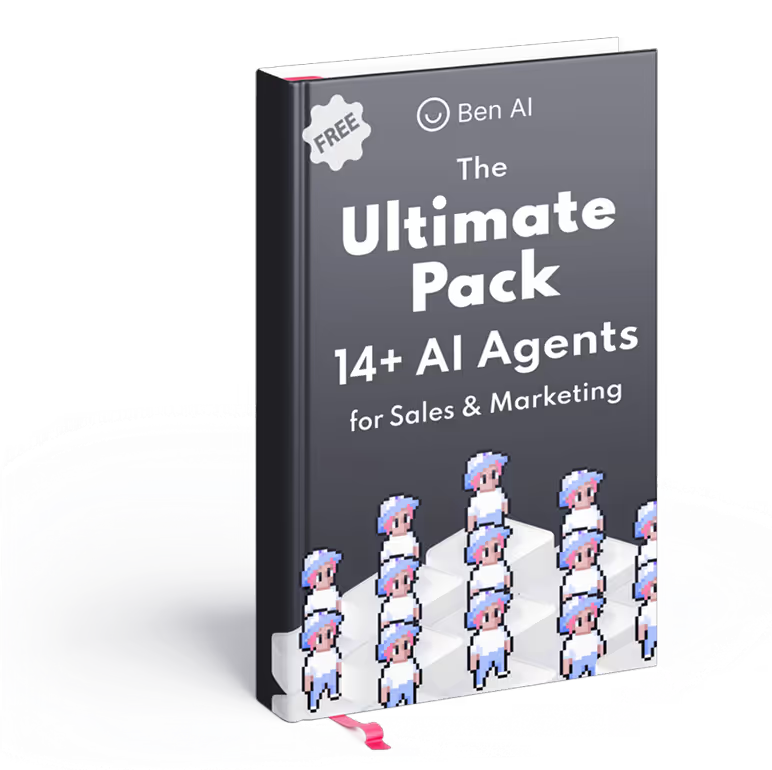
Latest Blogs
Explore our latest blog posts and insights.


